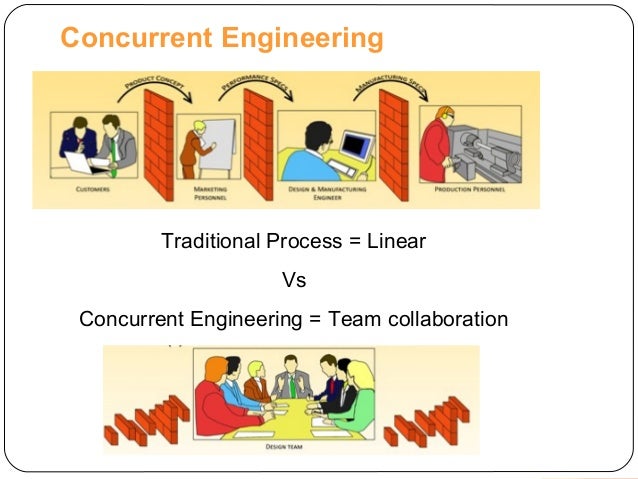Concurrent Engineering Definition

Is a workflow that instead of working sequentially through stages, carries out a number of tasks in parallel. For example: starting tool design before the detailed designs of the product are finished, or the engineer starting on detail design solid models before the concept design surfaces models are complete. Although this does not necessarily reduce the amount of manpower required for a project, it does drastically reduce lead times and thus time to market. Feature based CAD systems have for many years allowed the simultaneous work on 3D solid model and the 2D drawing by means of 2 separate files, with the drawing looking at the data in the model; when the model changes the drawing will associatively update. Some CAD packages also allow associative copying of geometry between files. This allows, for example, the copying of a part design into the files used by the tooling designer. The manufacturing engineer can then start work on tools before the final design freeze; when a design changes size or shape the tool geometry will then update.

Concurrent engineering also has the added benefit of providing better and more immediate communication between departments, reducing the chance of costly, late design changes. It adopts a problem prevention method as compared to the problem solving and re-designing method of traditional sequential engineering.
Concurrent Engineering Design
Concurrent Engineering: A Successful Example for Engineering Design Research TTomiyama Department of Precision Machinery Engineering, The University of Tokyo Hongo 7-3-1, Bunkyo-ku, Tokyo 113, Japan Abstract This paper reviews concurrent engineering from the viewpoint of engineering design research. Concurrent engineering is a work methodology based on the parallelization of tasks (i.e. Performing tasks concurrently). It refers to an approach used in product development in which functions of design engineering, manufacturing engineering and other functions are integrated to reduce the elapsed time required to bring a new product to the market.